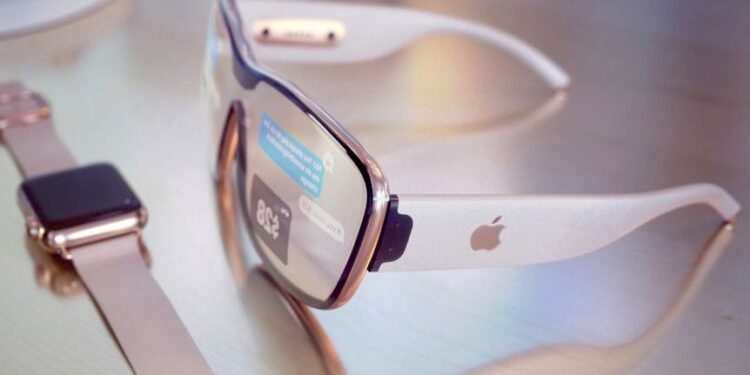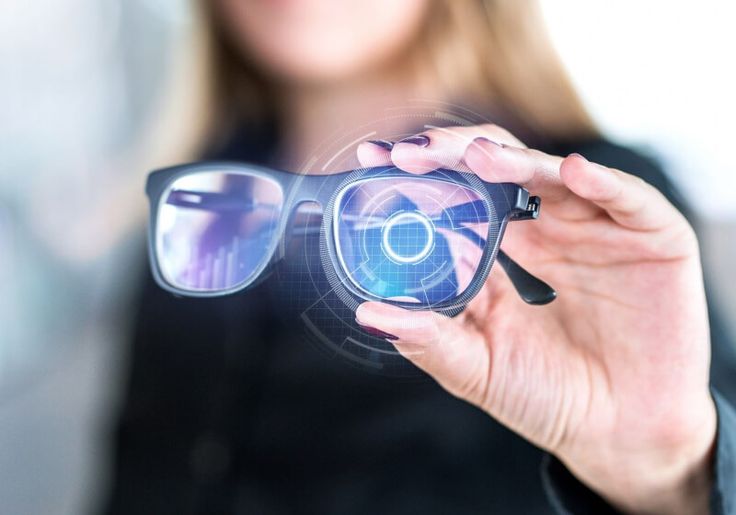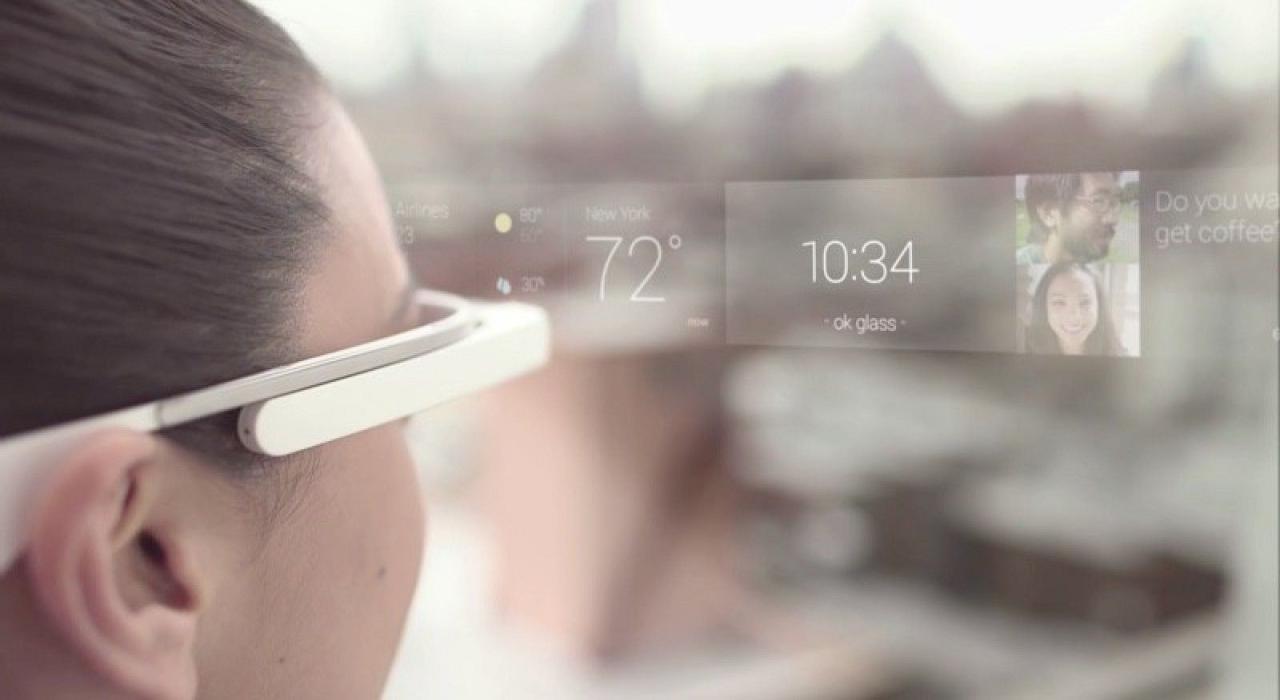Apple’s AR Glasses signify the company’s ambitious entry into the augmented reality space. Designed with elegance and functionality in mind, these glasses aim to provide users with a hands-free, immersive experience that enhances everyday activities. By integrating advanced optics, artificial intelligence (AI), and robust connectivity, Apple’s AR Glasses are set to redefine personal computing and interaction paradigms.
A. The Evolution of Augmented Reality
- Early Beginnings:
- The concept of augmented reality (AR) has been around for decades, with its initial applications primarily in military and industrial settings.
- Early AR systems were cumbersome and limited, mainly used for training simulations and complex data visualization tasks.
- Consumer Adoption:
- The rise of smartphones and wearable technology has paved the way for AR’s mainstream adoption.
- Applications like Pokémon GO and Snapchat filters demonstrated AR’s potential in entertainment and social media, capturing public imagination.
- Technological Advancements:
- Advances in hardware, such as lightweight displays and improved battery life, have made AR devices more practical and user-friendly.
- Enhancements in AI and machine learning have enabled more intuitive and responsive AR experiences, making interactions more natural.
B. Apple’s Vision for AR Glasses
Apple envisions its AR Glasses as a natural extension of its existing ecosystem, complementing devices like the iPhone, iPad, and Mac. These glasses aim to provide users with seamless access to information and applications without the need for screens or physical controls. By focusing on design, usability, and integration, Apple seeks to make AR a ubiquitous part of everyday life.
Key Features of Apple’s AR Glasses
Apple’s AR Glasses are expected to incorporate a range of advanced features that set them apart from existing AR solutions. These features are meticulously designed to provide a seamless and immersive user experience.
A. Advanced Display Technology
- Micro-OLED Displays:
- The glasses are likely to feature micro-OLED displays, offering high-resolution visuals with minimal power consumption.
- These displays ensure that digital overlays are crisp and clear, enhancing the overall AR experience.
- Waveguide Optics:
- Waveguide technology allows light to be projected directly into the user’s eyes, creating a holographic-like display without obstructing vision.
- This technology ensures that AR content is seamlessly integrated with the real world, providing a natural viewing experience.
B. Superior Audio Integration
- Spatial Audio:
- Apple’s AR Glasses are expected to include spatial audio capabilities, providing immersive sound experiences that align with visual content.
- This feature enhances realism, making digital elements feel like they exist within the physical space.
- Bone Conduction Technology:
- By transmitting sound through bone conduction, the glasses ensure that audio remains private and does not interfere with ambient sounds.
- This technology is particularly useful for maintaining situational awareness while using AR applications.
C. Robust Connectivity and Integration
- Seamless Ecosystem Integration:
- Apple’s AR Glasses will integrate effortlessly with other Apple devices, such as iPhones, iPads, and Macs, ensuring a cohesive user experience.
- Features like Handoff and Continuity will allow users to switch between devices without interruption, maintaining workflow continuity.
- 5G and Wi-Fi 6 Support:
- High-speed connectivity options ensure that AR applications run smoothly, with minimal latency and rapid data transfer.
- This is crucial for real-time applications like remote assistance, live streaming, and interactive gaming.
D. Intuitive User Interface
- Gesture Recognition:
- Advanced gesture recognition allows users to interact with AR content using simple hand movements, reducing the need for physical controllers.
- This feature enhances user comfort and accessibility, making interactions more natural and fluid.
- Voice Control:
- Integration with Siri enables voice commands, providing a hands-free method to navigate and control AR applications.
- This ensures that users can multitask efficiently while using the glasses, enhancing overall productivity.
E. Enhanced AI and Machine Learning Capabilities
- Contextual Awareness:
- AI algorithms enable the glasses to understand and interpret the user’s environment, providing relevant information and suggestions.
- This contextual awareness makes AR applications more intuitive and useful, tailoring experiences to individual needs.
- Personalization:
- Machine learning allows the glasses to learn user preferences and behaviors, tailoring the AR experience to individual needs.
- This personalization ensures that the device remains relevant and valuable over time, adapting to changing user habits.
Applications Across Various Industries
Apple’s AR Glasses have the potential to impact a wide range of industries by enhancing productivity, improving customer experiences, and enabling new forms of interaction. Below, we explore some of the key applications across different sectors.
A. Healthcare
- Surgical Assistance:
- AR Glasses can provide surgeons with real-time data overlays, such as patient vitals and 3D visualizations of internal structures.
- This enhances precision and efficiency during complex procedures, reducing the risk of errors.
- Medical Training:
- Medical students can use AR Glasses to visualize anatomical structures and simulate surgical procedures in a controlled environment.
- This immersive training method improves learning outcomes and skill development, better preparing students for real-world scenarios.
B. Education
- Interactive Learning:
- AR Glasses can bring educational content to life, allowing students to interact with 3D models and simulations.
- This hands-on approach enhances understanding and retention of complex concepts, making learning more engaging.
- Remote Collaboration:
- Educators and students can collaborate in virtual classrooms, sharing resources and engaging in interactive lessons regardless of physical location.
- This facilitates a more flexible and inclusive learning environment, accommodating diverse learning styles.
C. Manufacturing and Engineering
- Design Visualization:
- Engineers can use AR Glasses to visualize and manipulate 3D models of products and components, streamlining the design process.
- This reduces errors and accelerates the development cycle, leading to more efficient product creation.
- Maintenance and Repair:
- AR Glasses can guide technicians through maintenance and repair tasks by providing step-by-step instructions and real-time data overlays.
- This improves efficiency and reduces downtime in manufacturing facilities, enhancing overall operational performance.
D. Retail
- Enhanced Shopping Experience:
- Customers can use AR Glasses to visualize products in their own environment before making a purchase, enhancing confidence and satisfaction.
- This feature is particularly useful for furniture, home decor, and fashion items, allowing customers to see how products fit into their lives.
- Personalized Recommendations:
- AR Glasses can analyze customer preferences and behaviors to provide tailored product recommendations and promotions.
- This personalized approach increases sales and customer loyalty, fostering a deeper connection between brands and consumers.
E. Real Estate
- Virtual Property Tours:
- Potential buyers can take virtual tours of properties, experiencing spaces as if they were physically present.
- This saves time and resources for both buyers and real estate agents, streamlining the property viewing process.
- Architectural Visualization:
- Architects and developers can present 3D models of buildings and renovations to clients, allowing for real-time adjustments and feedback.
- This enhances communication and ensures that projects meet client expectations, leading to higher satisfaction.
F. Entertainment and Media
- Immersive Gaming:
- AR Glasses can deliver immersive gaming experiences, blending virtual elements with the real world for a more engaging gameplay.
- This creates new opportunities for game developers and enhances user enjoyment, pushing the boundaries of interactive entertainment.
- Live Events and Performances:
- Attendees of live events can receive real-time information, interactive content, and enhanced visual effects through AR Glasses.
- This enriches the overall event experience and provides additional value to participants, making events more memorable.
Technological Innovations Driving AR Glasses
The development of Apple’s AR Glasses is supported by a series of technological innovations that enhance their functionality and user experience. These advancements are critical in making AR Glasses a practical and desirable device for consumers and professionals alike.
A. Miniaturization of Components
- Compact Optics:
- Advances in optics technology have enabled the creation of compact lenses and display systems that fit seamlessly into lightweight glasses.
- This ensures that the glasses remain comfortable and unobtrusive during extended use, promoting user adoption.
- Efficient Power Management:
- Improved battery technology allows for longer usage times without increasing the size or weight of the device.
- Efficient power management ensures that all features operate smoothly without frequent recharging, enhancing user convenience.
B. Enhanced Processing Power
- Advanced Chipsets:
- Apple’s custom-designed chipsets provide the necessary processing power to handle complex AR applications and real-time data analysis.
- These chipsets ensure that AR Glasses deliver fast and responsive performance, minimizing lag and enhancing user experience.
- Edge Computing:
- By processing data locally on the device, AR Glasses can provide real-time responses and reduce reliance on cloud-based processing.
- This enhances speed and reliability, particularly in environments with limited connectivity, ensuring uninterrupted functionality.
C. Improved Sensors and Tracking
- Eye-Tracking Technology:
- Eye-tracking sensors allow AR Glasses to understand where the user is looking, enabling more intuitive interactions and reducing the need for manual inputs.
- This technology enhances the overall user experience by making interactions feel natural and seamless, improving usability.
- Spatial Mapping:
- Advanced spatial mapping sensors enable AR Glasses to accurately understand and interact with the user’s environment.
- This ensures that digital elements are precisely aligned with the physical world, creating a more immersive and realistic AR experience.
D. Enhanced Connectivity and Integration
- Bluetooth and Wi-Fi:
- High-speed Bluetooth and Wi-Fi capabilities ensure that AR Glasses can connect seamlessly with other devices, facilitating data transfer and synchronization.
- This integration allows users to access a wide range of applications and services without interruption, enhancing the device’s versatility.
- Seamless Software Integration:
- Apple’s ecosystem integration ensures that AR Glasses work harmoniously with existing software and services, such as iCloud, Apple Music, and Apple Maps.
- This seamless integration enhances user convenience and ensures a cohesive experience across all Apple devices.
E. Advanced AI and Machine Learning
- Contextual Awareness:
- AI algorithms enable AR Glasses to understand and interpret the user’s environment, providing relevant information and suggestions.
- This contextual awareness makes AR applications more intuitive and useful, tailoring experiences to individual needs.
- Personalization:
- Machine learning allows the glasses to learn user preferences and behaviors, tailoring the AR experience to individual needs.
- This personalization ensures that the device remains relevant and valuable over time, adapting to changing user habits and preferences.
Benefits of Apple’s AR Glasses
The introduction of Apple’s AR Glasses brings a multitude of benefits that extend beyond mere technological advancement. These benefits enhance user experience, drive innovation across industries, and contribute to broader societal impacts.
A. Enhanced User Experience
- Hands-Free Interaction:
- AR Glasses offer hands-free access to information and applications, allowing users to multitask efficiently.
- This enhances productivity and convenience, making daily tasks more manageable.
- Immersive Engagement:
- The seamless blending of digital and physical elements creates an immersive experience that captivates users.
- This engagement transforms how users interact with information, making interactions more meaningful and enjoyable.
B. Innovation Across Industries
- Healthcare Advancements:
- AR Glasses facilitate precision in medical procedures and enhance medical training, leading to better patient outcomes and improved healthcare education.
- Educational Transformation:
- By making learning more interactive and engaging, AR Glasses revolutionize educational methodologies, catering to diverse learning styles and needs.
- Manufacturing Efficiency:
- In manufacturing, AR Glasses streamline design and maintenance processes, reducing errors and increasing operational efficiency.
C. Broader Societal Impacts
- Increased Accessibility:
- AR Glasses can provide enhanced accessibility features for individuals with disabilities, promoting inclusivity and equal opportunities.
- Economic Growth:
- The development and adoption of AR technology stimulate economic growth by creating new markets and job opportunities.
- Cultural Enrichment:
- AR enhances cultural experiences by providing interactive and immersive ways to engage with art, history, and entertainment.
Challenges and Considerations
While Apple’s AR Glasses offer significant advancements, their adoption and integration come with challenges that need to be addressed to maximize their potential.
A. Privacy and Security
- Data Privacy Concerns:
- AR Glasses collect vast amounts of data, including visual and auditory information, raising concerns about user privacy.
- Security Risks:
- Protecting the device and the data it handles from cyber threats is paramount to maintaining user trust and safety.
B. Technological Limitations
- Battery Life:
- Ensuring sufficient battery life while maintaining a lightweight and comfortable design is a constant challenge in AR device development.
- Display Quality:
- Balancing high-resolution displays with energy efficiency and form factor requires continuous innovation and optimization.
C. User Adoption
- Cost Barriers:
- High production costs may translate to premium pricing, limiting accessibility for a broader audience.
- Learning Curve:
- Users may face a learning curve in adapting to new interaction paradigms, necessitating intuitive design and comprehensive user support.
D. Social Acceptance
- Perception Issues:
- AR Glasses may face skepticism regarding their practicality and necessity, affecting widespread acceptance.
- Cultural Adaptation:
- Integrating AR technology into diverse cultural contexts requires sensitivity and adaptability to different societal norms and preferences.
Implementation Strategies for Businesses
For businesses looking to leverage Apple’s AR Glasses, strategic implementation is crucial to maximize benefits and ensure a smooth integration into existing workflows.
A. Identify Use Cases
- Operational Efficiency:
- Determine how AR Glasses can streamline operations, enhance productivity, and reduce errors within your organization.
- Customer Engagement:
- Explore ways AR Glasses can improve customer interactions, provide immersive experiences, and enhance satisfaction.
B. Invest in Training and Support
- Employee Training:
- Provide comprehensive training programs to ensure employees are proficient in using AR Glasses and integrating them into their daily tasks.
- Technical Support:
- Establish robust technical support systems to address any issues or challenges that may arise during AR Glasses implementation.
C. Collaborate with AR Developers
- Custom Applications:
- Partner with AR developers to create custom applications tailored to your business needs, enhancing the functionality and relevance of AR Glasses within your organization.
- Continuous Improvement:
- Engage in ongoing collaboration to refine and improve AR applications based on user feedback and evolving business requirements.
D. Monitor and Evaluate Performance
- Performance Metrics:
- Establish key performance indicators (KPIs) to measure the impact of AR Glasses on operational efficiency, customer satisfaction, and overall business performance.
- Feedback Loops:
- Implement feedback mechanisms to gather user insights and continuously improve AR Glasses integration and functionality.
Future Perspectives on Apple’s AR Glasses
As AR technology continues to evolve, Apple’s AR Glasses are poised to play a pivotal role in shaping the future of human-computer interaction. Here are some future perspectives on the development and impact of AR Glasses.
A. Enhanced Interactivity
- Haptic Feedback:
- Future iterations may incorporate haptic feedback, providing tactile sensations that enhance the immersive experience and enable more intuitive interactions.
- Advanced Gesture Controls:
- Continued advancements in gesture recognition will allow for more complex and natural interactions with AR content, making the technology even more user-friendly.
B. Expanded Ecosystem Integration
- Smart Home Integration:
- AR Glasses will seamlessly integrate with smart home devices, allowing users to control their home environment through augmented interfaces.
- Wearable Technology Synergy:
- Collaboration with other wearable technologies, such as smartwatches and fitness trackers, will create a unified and interconnected ecosystem that enhances user experience.
C. Broader Industry Adoption
- Enterprise Solutions:
- Industries such as logistics, construction, and retail will increasingly adopt AR Glasses for tasks like inventory management, design visualization, and customer service.
- Creative Industries:
- Fields like graphic design, architecture, and entertainment will leverage AR Glasses to push the boundaries of creativity and innovation, offering new forms of expression and engagement.
D. Societal Implications
- Educational Transformation:
- AR Glasses will revolutionize education by providing interactive and immersive learning experiences, catering to diverse learning styles and enhancing educational outcomes.
- Healthcare Advancements:
- Continued advancements in AR technology will further enhance medical training, surgical precision, and patient care, contributing to improved healthcare systems worldwide.
E. Ethical and Regulatory Considerations
- Ethical Use:
- As AR Glasses become more pervasive, ensuring ethical use of the technology will be crucial, addressing concerns related to privacy, data security, and user consent.
- Regulatory Frameworks:
- Developing comprehensive regulatory frameworks will support the responsible growth and adoption of AR technology, balancing innovation with societal well-being.
Conclusion
Apple’s AR Glasses represent a significant leap forward in augmented reality technology, offering a blend of style, functionality, and advanced features that promise to transform various aspects of our lives. From enhancing user experiences and driving innovation across industries to fostering broader societal impacts, these glasses are poised to redefine how we interact with the digital and physical worlds.
However, the successful integration of AR Glasses into daily life and business operations requires addressing challenges related to privacy, security, user adoption, and technological limitations. By strategically implementing these devices and fostering collaboration between developers, businesses, and users, Apple can maximize the potential of AR Glasses and pave the way for a more connected and immersive future.
As AR technology continues to evolve, Apple’s commitment to innovation and user-centric design will ensure that its AR Glasses remain at the forefront of technological advancements, shaping the future of human-computer interaction and driving the next wave of digital transformation.



